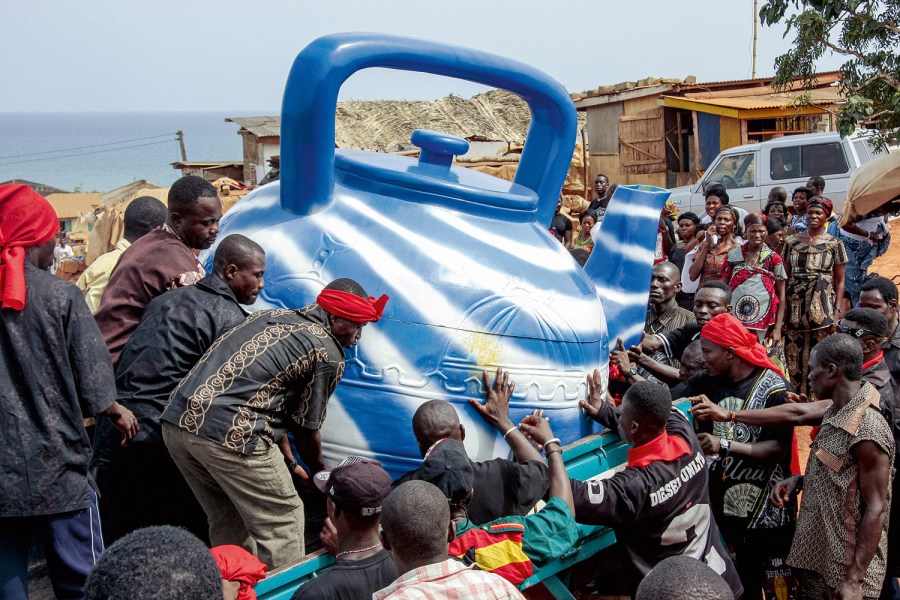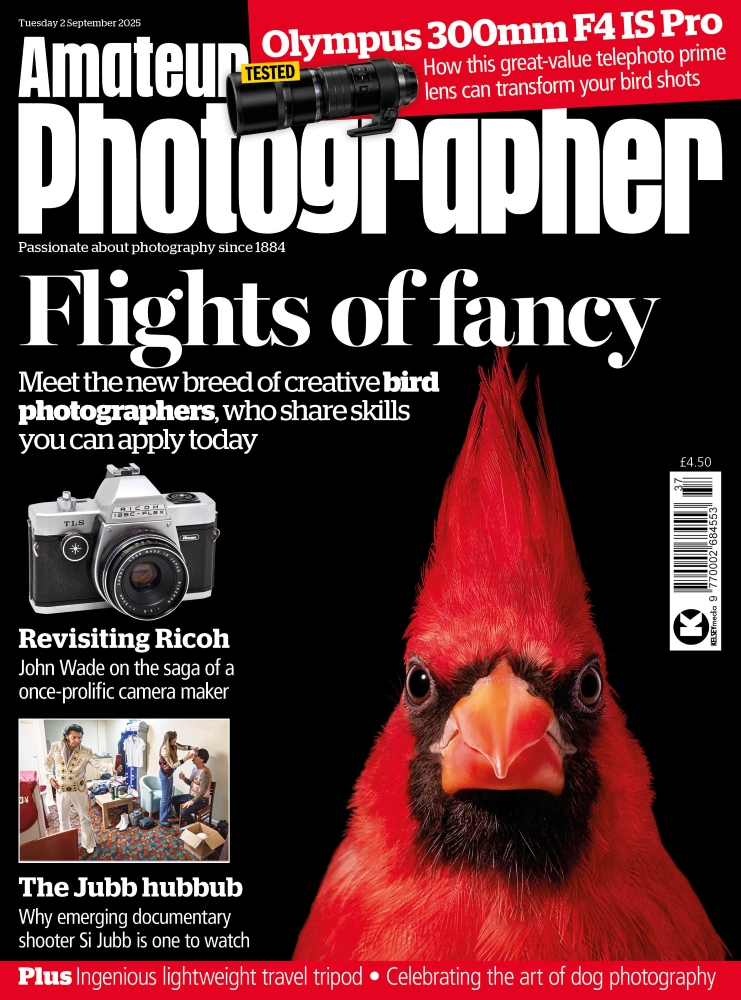Swiss social anthropologist Regula Tschumi spent over two decades photographing Ghana’s vibrant funeral culture. Her new book, Buried in Style, is a celebration of life, death, and transformation — not just for her subjects, but for the photographer herself.
When Regula Tschumi answered the phone, she had just arrived home from Ghana. It wasn’t just the jet lag she was contending with, her father had died the day before. ‘He was 97. A good death, you know,’ she said calmly. ‘He did almost everything he wanted to do.’ The timing was strange and poignant: her new book Buried in Style, two decades in the making, had just been published — a profound visual study of how Ghanaians honour the dead with style, symbolism, dance and joy.
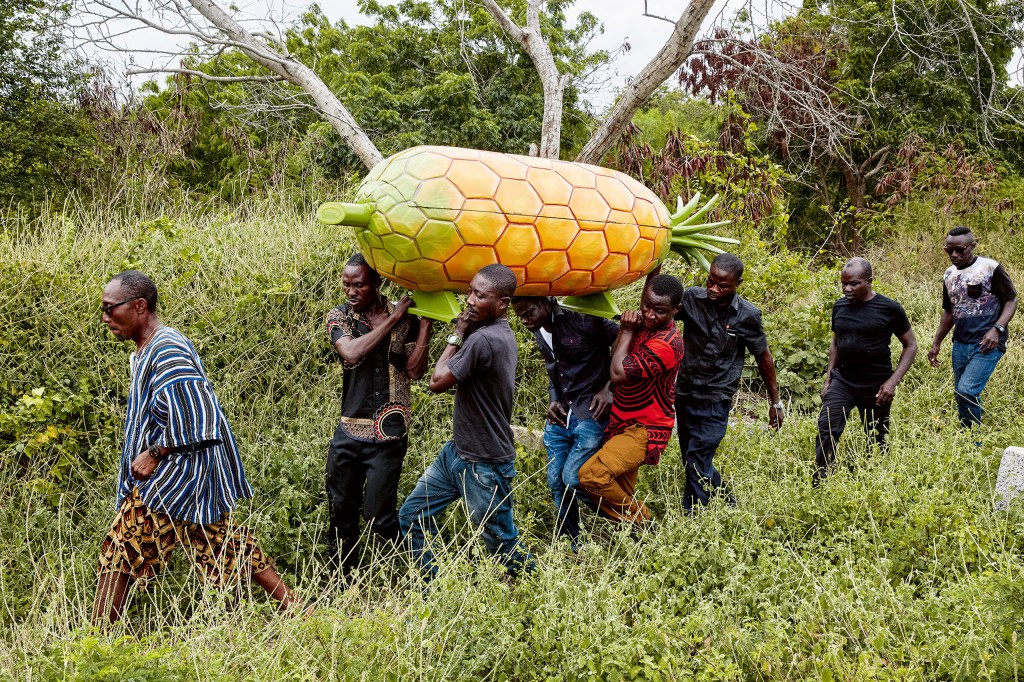
‘I may not even show the book to my family, she added. ‘It feels… shy.’ Tschumi, a Swiss anthropologist, has spent years immersed in funerals that exploded with colour and choreography — where loved ones might be laid to rest in a fish, a shoe, a teapot or a bulldozer. Back home, in contrast, her father’s burial would be sober, bureaucratic. ‘In Ghana, there would be a big party — a celebration. Here, it’s just running from one office to the next. And when you do the funeral, people come in black and you have to be very serious and you may not even talk of a party.’
Learning in the field
Yet Buried in Style is about more than cultural comparison. It is a book that fuses anthropology with photography, turning an academic interest into an intensely personal journey, one that saw Tschumi grow from a snapper with no clue to an image-maker of subtlety, structure and deep respect.
Tschumi first travelled to Ghana in 2002 as part of her doctoral research. At the time, photography wasn’t her priority. ‘I had a small digital camera in my pocket. I didn’t know about settings or lenses, it was just faster than taking notes.’ Over time, she realised these ‘snapshots’ were doing more than documenting. They were showing something rarely seen — a funerary culture where grief, art, and pride were bound together in remarkable visual forms.
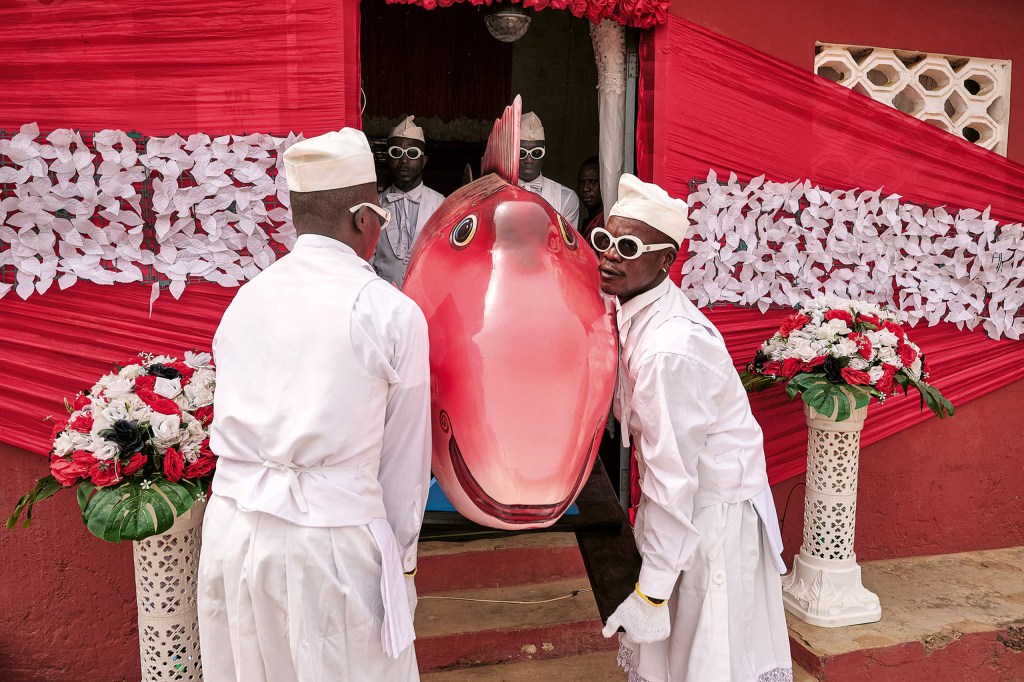
Coffins shaped like taxis, eagles or loaves of bread are just the beginning. Ghanaians of the Ga-Adangme ethnic group, especially in the southern regions, embrace funerals as public spectacles and spiritual rites of passage. The more impressive the coffin, the décor, or the guest list, the more prestige the family earns and the more likely the deceased will be remembered fondly as they join the ranks of their ancestors.
Influencers
Photography gradually shifted from being Tschumi’s shorthand to her voice. ‘I didn’t pay attention at first. Then I reconnected with Peter Turnley.’ The American photojournalist best known for his black-and-white reportage in Newsweek, had met Tschumi in China years earlier, when she was working as a flight attendant. In 2012, she joined one of his photography workshops. ‘I didn’t know what an aperture was. But he was patient and he invited me to be his assistant three times.’
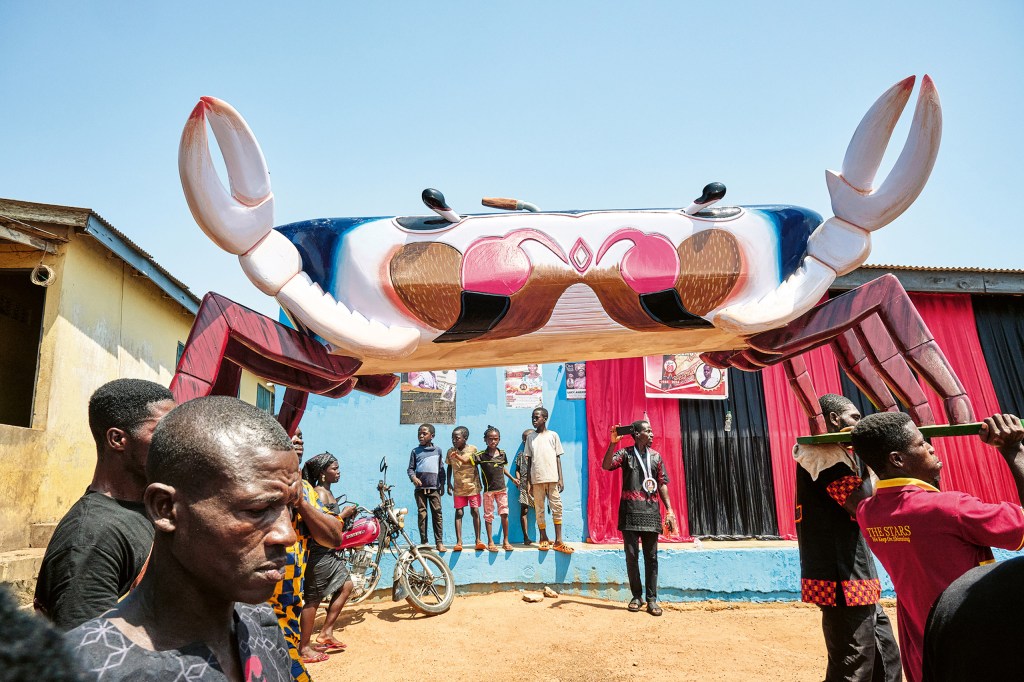
Turnley taught her the fundamentals: get close, but not too close. Honour your subject. Let emotion lead. Another mentor, Ernesto Bazan, pushed her in different ways. ‘He hated everything I showed him,’ she laughs. Bazan challenged her to explore more painterly, composed work while another influence, Maciej Dakowicz, helped steer her towards Fuji cameras and a more compact kit. ‘Maciej never pushed me. He’d watch you work and say: this one I like. That one I don’t.’
Her early images were shaped as much by instinct as by education. She had studied art history, and grew up painting with her grandfather, a painter himself. ‘Composition is natural for me — like sketching. Maybe that’s why you see continuity in the book,’ she reflects. ‘Even the early pictures, they’re not technical, but they’re composed.’
The book and the body
Buried in Style is not Tschumi’s first book on Ghanaian funerals but it’s certainly her most visually ambitious. Earlier titles such as The Buried Treasures of the Ga: Coffin Art in Ghana and Die Bedeutung der figurativen Särge in Ghana leaned more heavily on academic analysis, tracing the historical and ritual origins of coffin and palanquin art. Her PhD traced the lineage of figurative coffins back to ceremonial palanquins. This latest release is image-led, richly designed and sensitively sequenced. ‘The publisher was very hands-on,’ she says, ‘but the book was almost finished when the graphic designer started. The images, the chapters, the flow — all that came from me.’
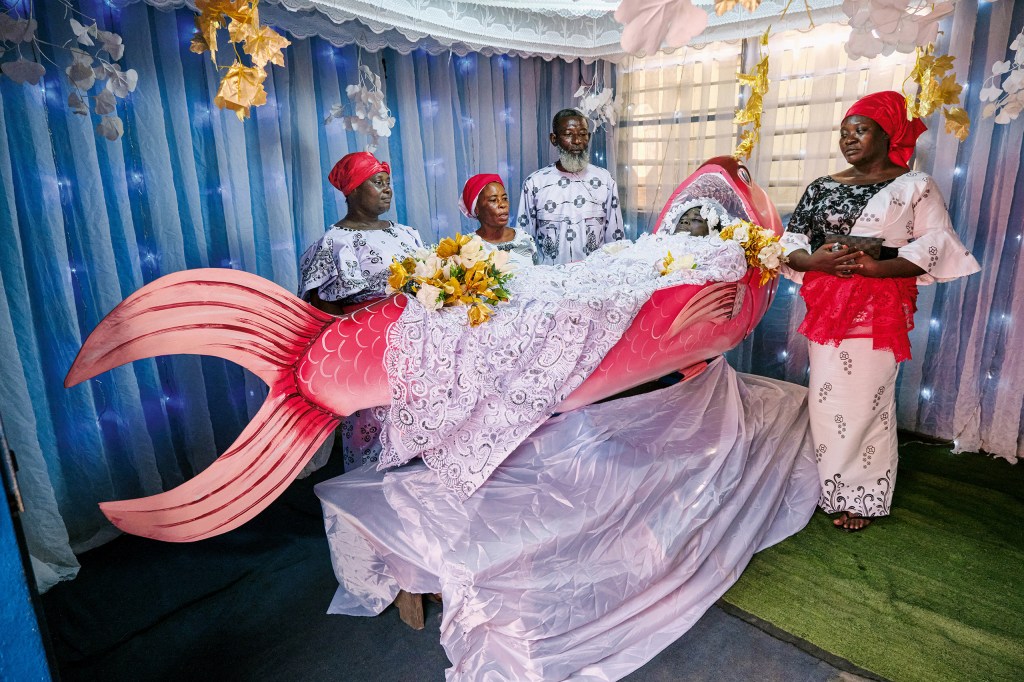
The book is structured around five main chapters: Christian funerals, traditional funerals, coffin dancers, laying out, and the coffins themselves. Laying out — the ritual preparation and display of the deceased — is one of the most startling and imaginative aspects of Ghanaian funerals. Undertakers often transform front rooms or tents into fantastical, staged environments: the dead may be arranged sitting upright, reclining on beds with flashing fairy lights, or even, in one unforgettable image from Buried in Style, propped up next to a live barbecue, with a bottle of beer in hand. Tschumi explains, ‘The aim is to make it feel like they’re still here — to keep their presence vivid.’ These theatrical tableaus aren’t morbid; they’re expressions of love, identity and showmanship.
Together, the chapters form a powerful panorama of a country where funerals blur the line between mourning and carnival. Where mobile phone vendors are buried in phone-shaped caskets. Where coffin dancers in choreographed suits twirl, glide, and throw the weight of grief skyward.
Viral dancer
One such dancer, Benjamin Aidoo, features prominently in Tschumi’s images. Known worldwide through viral videos, Aidoo has transformed the role of the pallbearer into that of a showman. His team performs in colour-coded uniforms, often to music chosen by the family. ‘He wants people to rejoice,’ Tschumi says. ‘He says: weddings, birthdays, they can happen again. But each person only has one funeral.’
That desire to do things right — once — puts enormous creative and financial pressure on families. Funerals can last days, with multiple ceremonies, intricate laying-out rituals, and performances designed to impress. ‘It’s partly religious, partly social,’ Tschumi explains. ‘If you honour someone well, the ancestors will look kindly on you. And guests who enjoy themselves… they give more money.’
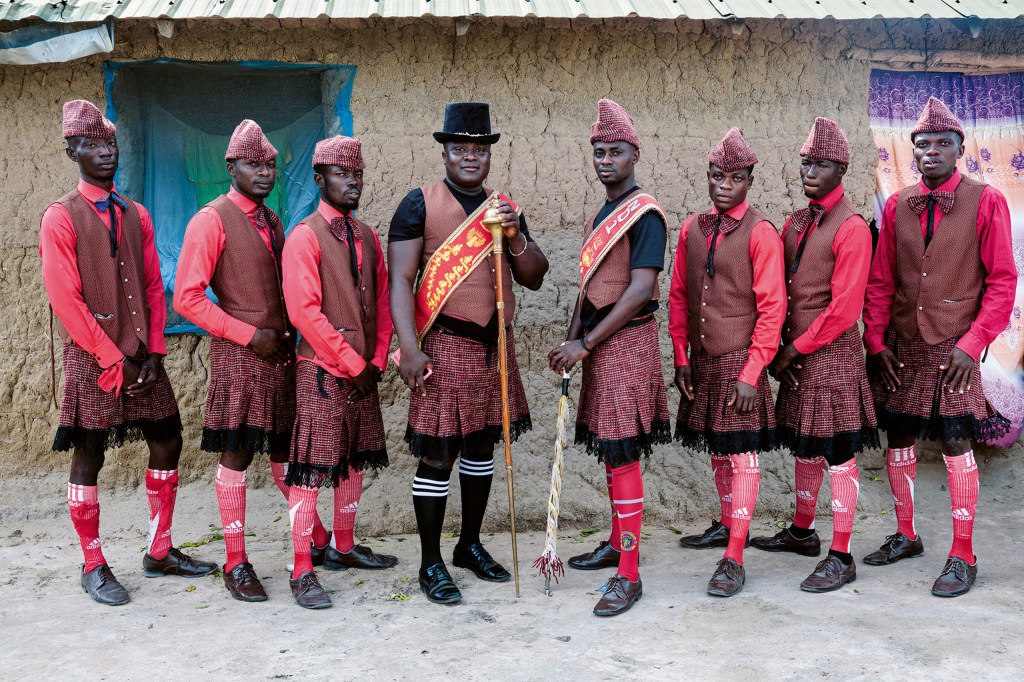
Figurative coffins, meanwhile, a tradition born in Accra region and now replicated throughout Ghana and beyond. The most celebrated names — Kane Kwei, Ataa Oko Addo, Paa Joe — were originally carpenters. Their successors now include Daniel Mensah, Kudjoe Affutu, and Kwaku Hanson, whose work Tschumi captures in dazzling detail. A pineapple seller may be buried in a pineapple; a pig’s trotter coffin for a pig’s trotter saleswoman; a lorry driver in a blue Bedford truck; a cook in a giant pot of traditional Ghanaian dish kenkey.
Tschumi has seen it all. She’s been backstage at coffin workshops, inside laying-out tents, behind-the-scenes with dancers. She’s already written about the coffin makers in other books. Buried in Style isn’t concerned with how the coffins are built, it’s about what they mean. It’s about transformation.
Rite of passage
Across the 240 pages of Buried in Style, what emerges is not just a record of ritual, but of resilience both of the people in front of the lens and the one behind it. ‘I’ve changed too,’ Tschumi admits. ‘My view of death, of what a funeral is — all of that has shifted. I now see it as a transition, not an end.’
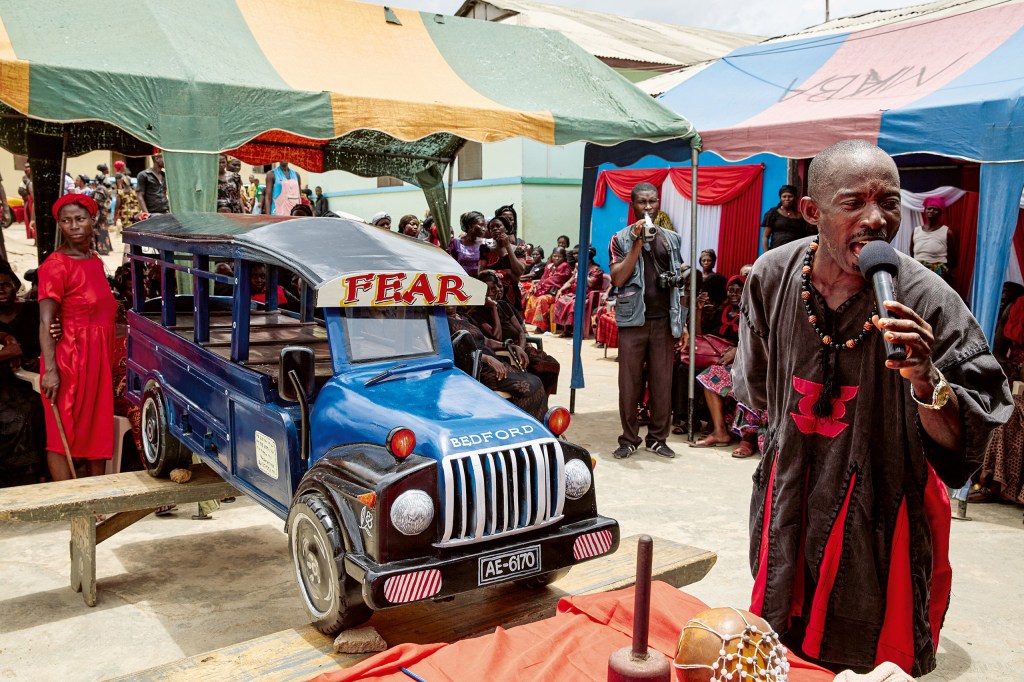
As her own father passed, Tschumi was still navigating the launch of a book about funerals. ‘My family probably doesn’t see it the same way. It’s too close. Too soon.’ But the timing, strange as it was, underscores the book’s central message: death is not always a tragedy. Sometimes it’s a mirror.
The book is also a tribute to her father in more ways than one. During his retirement, he was a prolific art collector and helped found a foundation that now stages exhibitions — one of which Tschumi is helping organise. ‘Sadly, he’ll never see it. But he would’ve been proud.’
Visual legacy
Buried in Style offers much to admire: not just as ethnography, but as a slow-built, deeply earned photographic practice. Tschumi has moved from not knowing how to set her camera to producing one of the most striking visual records of funerary culture ever published. She brings a painter’s sense of framing, a photojournalist’s respect, and an anthropologist’s curiosity.
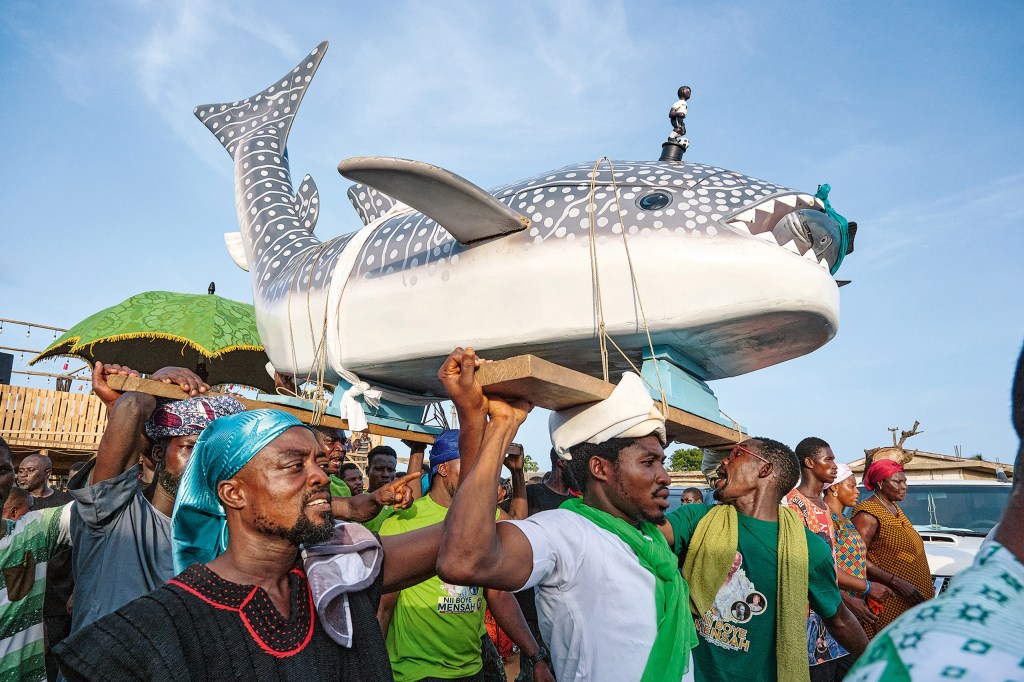
What holds it all together is empathy, an unspoken understanding that to photograph death is to honour life. That to document a culture’s rituals of goodbye is to open yourself to what you may one day lose.
Regula Tschumi’s journey — personal, visual, academic and emotional — is far from over. But Buried in Style ensures that the stories she’s witnessed, and the people she’s honoured, won’t be forgotten.
Regula Tschumi Buried in Style. Artistic Coffins and Funerary Culture in Ghana is published by Kehrer Verlag rrp €49.90

